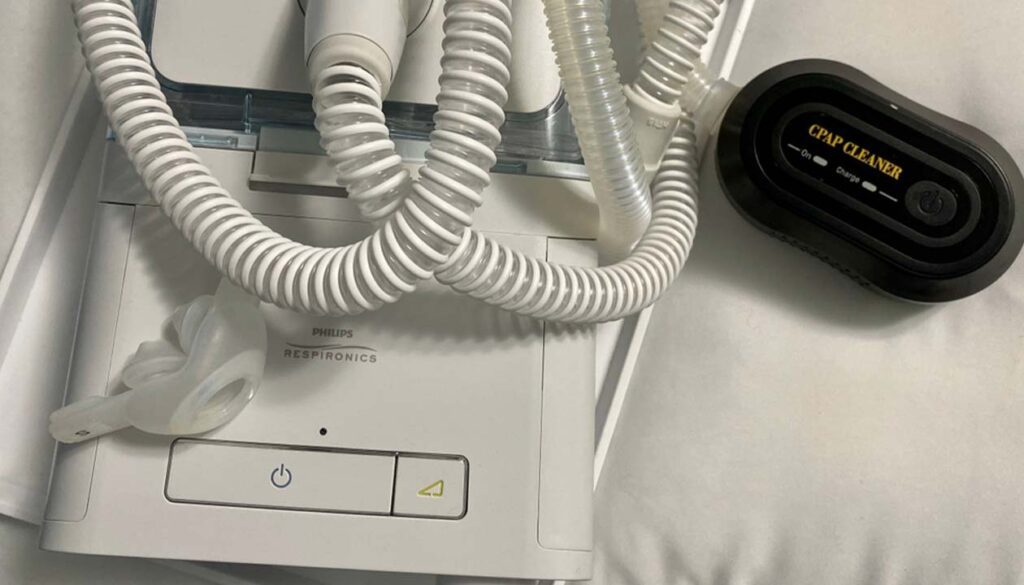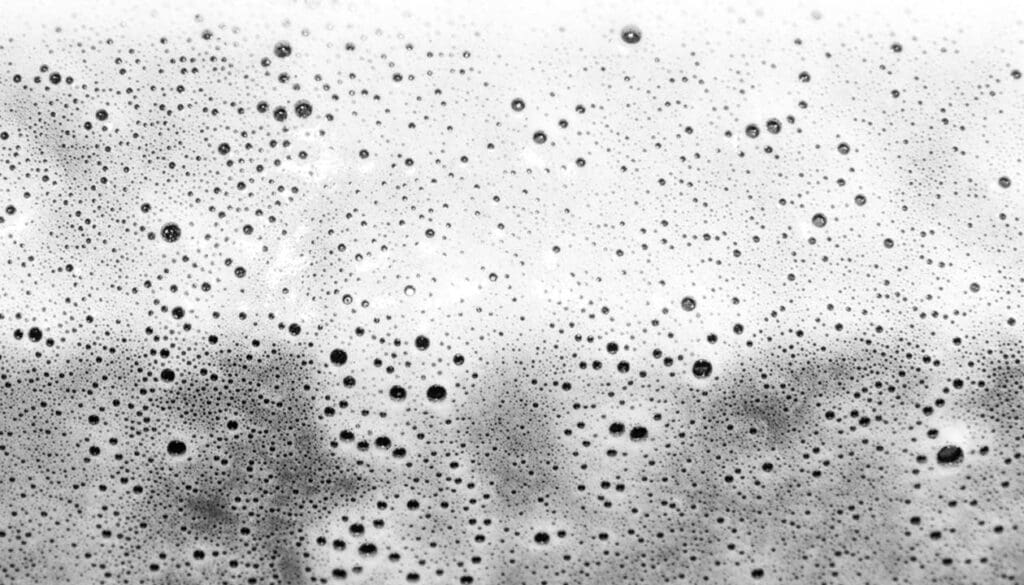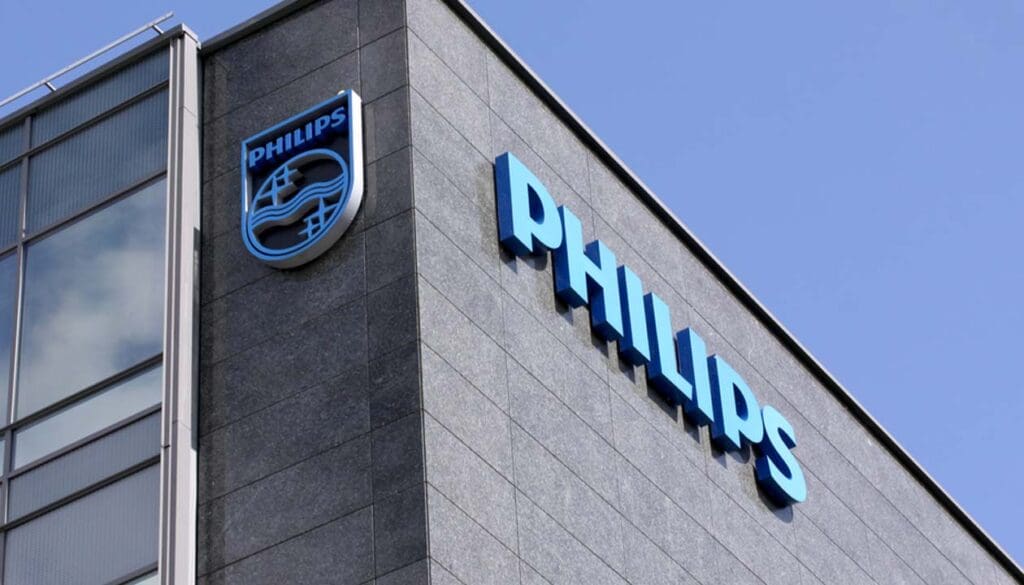CPAP machines were one of the greatest medical inventions of the 20th century. By treating sleep apnea, these machines have prevented countless deaths. Unfortunately, these machines can make you sick if you don’t keep them clean.
Users have always had complaints about CPAP machines. They are uncomfortable to wear. They make too much noise. Over the years, advances in CPAP technology have reduced these issues.
In the past ten years, thousands of CPAP users have complained of symptoms CPAP users hadn’t had in the past. We finally discovered the foam used to insulate sound contained many harmful chemicals. People breathed in these chemicals and became sick. Patients reported many deadly diseases — even cancer.
These issues occurred in CPAP machines made by Philips, one of the main CPAP machine makers. Ironically, Philips has blamed the problem on unauthorized CPAP cleaners that use ozone. They say it breaks down the chemicals and causes them to be inhaled.
We will look at the history of CPAP machines, why Philips’ product is making people sick, recalls of these devices, and legal actions underway by patients to recover against Philips.
Brief History

The first use of a device using the concept of continuous positive airway pressure (CPAP) was in 1912. Doctors used the device in thoracic surgery to prevent Atelectasis — collapsed lungs. In the mid-20th century, hospitals had CPAP-related devices that used intermittent positive pressure breathing (IPPB) to prevent acute respiratory distress syndrome (ARDS) — lungs filling with fluid.
In 1971, the name CPAP was first used for devices that prevented hyaline membrane disease (HMD) in premature babies. Babies not having had the time necessary for their lungs to fully develop before they were born causes HMD. Today, 90% of patients with HMD survive.
In 1980, an Australian doctor, Colin Sullivan, first tried to use CPAP therapy to treat sleep apnea. It was an incredible success. In 1985, Respironics brought the first CPAP machine to market in the United States. By the 1990s, CPAP machines were widely available to treat sleep apnea at home. In 2008, Philips, a giant in electronics, bought Respironics.
Over the years, there have been several advances in CPAP machines that have made them more effective, more comfortable to use, and less noisy. One advance is BiPAP machines. Traditional CPAP machines provide the same level of air pressure whether you’re inhaling or exhaling. BiPAP machines provide more pressure when inhaling and less when exhaling. For some conditions, BiPAP is better than traditional CPAP.
Sleep apnea is a condition where breathing repeatedly stops and starts while asleep. Left untreated, sleep apnea can cause:
- High blood pressure
- Heart disease
- Type 2 diabetes
- Metabolic syndrome
- Liver problems
That’s not all. People with sleep apnea have difficulty with daytime fatigue. Daytime fatigue causes poor concentration and irritability. Daytime drowsiness caused by sleep apnea has led to many car accidents.
So, CPAP can reduce or eliminate sleep apnea. Doing so, it can help prevent all these other health issues. That makes CPAP one of the greatest inventions of the 20th century. But there is a downside.
In the 1980s, when CPAP machines became available for home treatment, that meant patients needed to clean the machines themselves. Without cleaning, bacteria and mold can accumulate in parts of CPAP machines. This can make you sick.
To prevent a dirty CPAP machine from making you sick, all you have to do is disassemble it and clean it once per day. Who has time for that? Entrepreneurs took notice of this issue. Convenient CPAP cleaning devices came to market that made it much easier for you. These devices used either ozone or UV light to clean CPAP machines.
Just when we thought we had solved many of the issues, patients complained about with CPAP machines, a new problem arose. It was at least a decade ago when these new symptoms appeared:
- Headaches
- Upper airway irritation
- Cough
- Chest pressure
- Sinus infections
Philips Respironics was receiving complaints of these symptoms where patients saw black particles in their device’s air pathway. The Food and Drug Administration (FDA) noted these issues in its recall notice in June 2021.
Philips CPAP Machine Recall Lawsuit Overview

The FDA labeled the June 2021 recall of several Philips Respironics branded CPAP devices, BiPAP devices, and ventilators a Class I recall. This is the FDA’s most urgent recall classification. It’s reserved for cases where exposure to a product can cause serious adverse health consequences or death.
The black particles in the devices that are thought to cause the symptoms mentioned above come from the polyester-based polyurethane sound abatement foam Philips used in the recalled machines. When the foam degrades, it makes its way into the air pathway of the machine. Patients then inhale these dangerous particles.
This foam contains the following chemicals:
- Diethylene glycol
- Dimethyl diazene (Azoxymethane)
- Phenol, 2,6-bis(1,1-dimethylethyl)-4-(1-methylpropyl)
- Toluene diamine
- Toluene diisocyanate
It’s an understatement to say these chemicals aren’t good for you. These chemicals include carcinogenic and other toxic effects.
The following is from the National Institute of Health (NIH) National Library of Medicine:
Diethylene glycol poisoning occurs in three phases. The first phase consists of gastrointestinal symptoms, with evidence of inebriation and developing metabolic acidosis. If poisoning is pronounced, patients can progress to a second phase with more severe metabolic acidosis and evidence of emerging renal injury, which, in the absence of appropriate supportive care, can lead to death. If patients are stabilized, they may then enter the final phase with various delayed neuropathies and other neurological effects, sometimes fatal.
It takes 1 ml of pure diethylene glycol over a short period to poison you, so these tiny particles won’t be enough to reach the level mentioned above. But, what are the effects of continued consumption over time? Gasoline might not poison you if you drink only a tiny droplet per day. But if you do that every day, you’ll probably notice some issues. You could say the same about diethylene glycol.
Dimethyl diazene, also known as azoxymethane, increases your risk of colon cancer. The Canadian government says phenol, 2,6-bis(1,1-dimethylethyl)-4-(1-methylpropyl) is bad for the environment. Do you want to inhale a chemical continuously, in concentrated form, that’s bad for the environment?
Toluene diamine can cause organ damage, skin problems, cancer, infertility, and genetic defects. It’s an ingredient in hydraulic fluid and some explosives. Toluene diisocyanate can cause eye problems, skin irritation, respiratory problems, and cancer. Inhaling it can be fatal.
As you can see, those tiny black particles you may have seen in your CPAP machine can be extremely dangerous. There have been complaints of the following ailments after inhaling these particles from the recalled CPAP machines.
- Severe Ear Inflammation
- Severe Nose Inflammation
- Severe Throat Inflammation
- Poisoning
- Acute Respiratory Distress System (ARDS)
- Pleural Effusion
- Reactive Airway Disease (RAD)
- Respiratory Failure
- Lung Damage
- Lung Disease
- Heart Attack
- Heart Failure
- Liver Damage
- Liver Disease
- Kidney/Renal Damage
- Kidney/Renal Disease
- Bladder Cancer
- Brain Cancer
- Breast Cancer
- Hematopoietic Cancer
- Kidney Cancer
- Leukemia
- Liver Cancer
- Lung Cancer
- Lymphatic Cancer
- Multiple Myeloma
- Nasal Cancer
- Non-Hodgkin Lymphoma
- Papillary Carcinoma
- Prostate Cancer
- Rectal Cancer
- Stomach Cancer
- Testicular Cancer
- Thyroid Cancer
Now that you know the risk, you’re probably wondering if your machine is on the recall list. The FDA lists the following Philips CPAP devices made between 2009 and April 26, 2021 that Philips has recalled:
- A-Series BiPAP A30
- A-Series BiPAP A40 (ventilator)
- A-Series BiPAP Hybrid A30
- A-Series BiPAP V30 Auto (ventilator)
- C-Series ASV (ventilator)
- C-Series S/T and AVAPS
- DreamStation
- DreamStation ASV
- DreamStation Go
- DreamStation ST, AVAPS
- Dorma 400
- Dorma 500
- E30
- Garbin Plus, Aeris, LifeVent (ventilator)
- OmniLab Advanced+
- REMstar SE Auto
- SystemOne ASV4
- SystemOne (Q-Series)
- Trilogy 100 (ventilator)
- Trilogy 200 (ventilator)
When you see the word ventilator, you’re probably thinking of the devices used in intensive care units for COVID-19 patients. Besides CPAP and BiPAP devices, Philips makes that kind of ventilator. Some of those ventilators are among the recall list. COPD ventilators are also on this list, like the A-Series BiPAP A40.
It’s important to know that CPAP machines aren’t the same as ventilators used in ICUs. During the worst days of COVID-19, some people tried to use CPAP machines as ventilators. It did not work.
If you’ve checked your CPAP machine and found you’ve been using one of these devices, you’re probably wondering what you can do about it. The first step is to go see your doctor. This is your health we’re talking about. You need testing to see if your CPAP machine has negatively affected you.
While meeting with your doctor, discuss whether you should continue using your CPAP machine while waiting for a new one. This is a decision made on a case-by-case basis. You must weigh the risks of using the CPAP machine against the risk of not using it. It will depend on the severity of the health condition that led to your CPAP prescription.
You may have to wait a while for your new CPAP machine. Philips was replacing CPAP machines with silicone used for noise abatement instead of the polyester-based polyurethane that contains all the dangerous chemicals. The silicone-based solution was also found to cause dangerous health conditions. To make matters worse, supply chain issues were causing long waits for necessary parts.
There’s another thing you need to put on your to-do list: you need to contact an attorney. One of the first questions your attorney will ask is, “what did your doctor say?” If there’s a health condition that’s known to be caused by the chemicals in the Philips machines, that’s evidence the Philips machine caused your problem. It’s not conclusive evidence, but it’s the first step.
If these dangerous chemicals have affected you, you need to join the many that have already brought lawsuits. You may recover compensation for:
- Medical bills
- Lost wages
- Loss of income in the future
- Pain and suffering
- Punitive damages
If you need any extra motivation, consider this. Evidence shows that Philips knew about the potential danger their machines have been causing since at least 2018. They waited until the summer of 2021 to recall these products. That left millions of CPAP users at risk for an additional three years.
Philips CPAP Recal Lawsuit History

If you join the many and file a claim against Philips, you’ll be a part of a complex mass tort case. In the past, there had been lawsuits against CPAP makers for various reasons. But none of those lawsuits were for contamination by the chemicals in Philips’ products.
Patients had been complaining for over a decade, but the cause was unknown. Philips knew the reason, but they waited at least three years to share it with the people at risk: those who were using the product.
Since we learned the cause, patients filed many individual cases and class actions. With so many cases in so many courts, the courts combined the cases into one. This multi-district litigation (MDL) matter is being heard by a federal judge in Pittsburg.
Philips’ most notable defense is that Philips does not authorize ozone cleaning devices for its products. They claim the use of these cleaning devices speeds up the degradation of the foam and releases harmful chemicals. SoClean, a maker of this type of device, has responded by suing Philips for making this claim.
The MDL judge will pick a few “bellwether” cases to see how verdicts go. Plaintiffs and defendants, seeing the outcome of the bellwether cases, have a better idea of what to expect. This motivates the parties to settle their cases. If there’s no settlement, the MDL court sends the case back to the original court where the case will go to trial.
We’re still early in the MDL. Rule 16.2 of the local court rules for the federal district court of the Western District of Pennsylvania requires alternative dispute resolution. Here, that means a mediator is being appointed. Mediation is common in a pre-trial setting. It’s designed to save the parties and the court the time and expense of a trial.
If mediation doesn’t result in a settlement, the MDL will move on to the bellwether trials. However the litigation turns, those who file earlier are more likely to be compensated earliest. That’s why it’s important that you join the many today.

